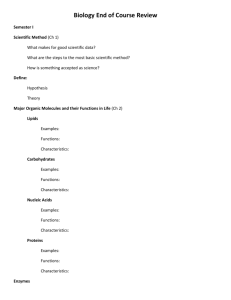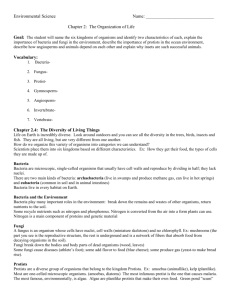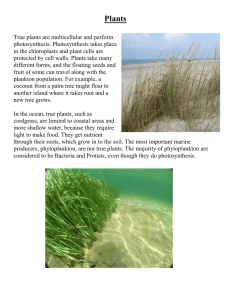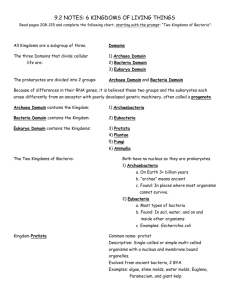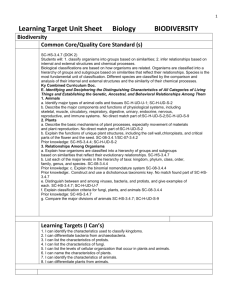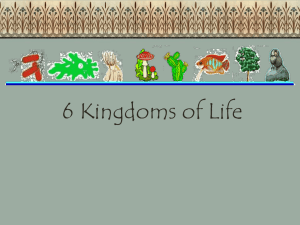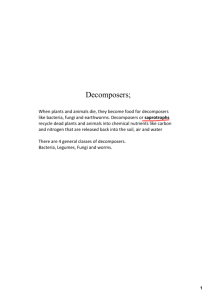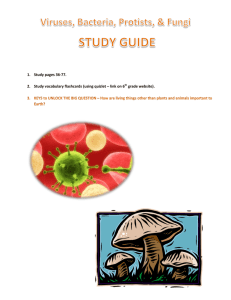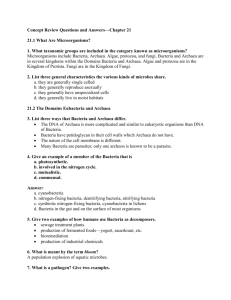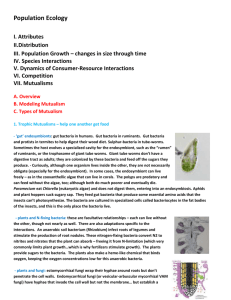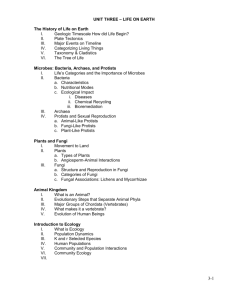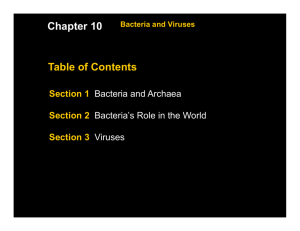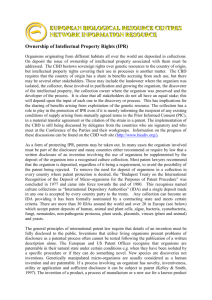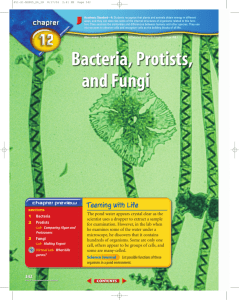The Diversity of Living Things Some scientists classify organisms
advertisement
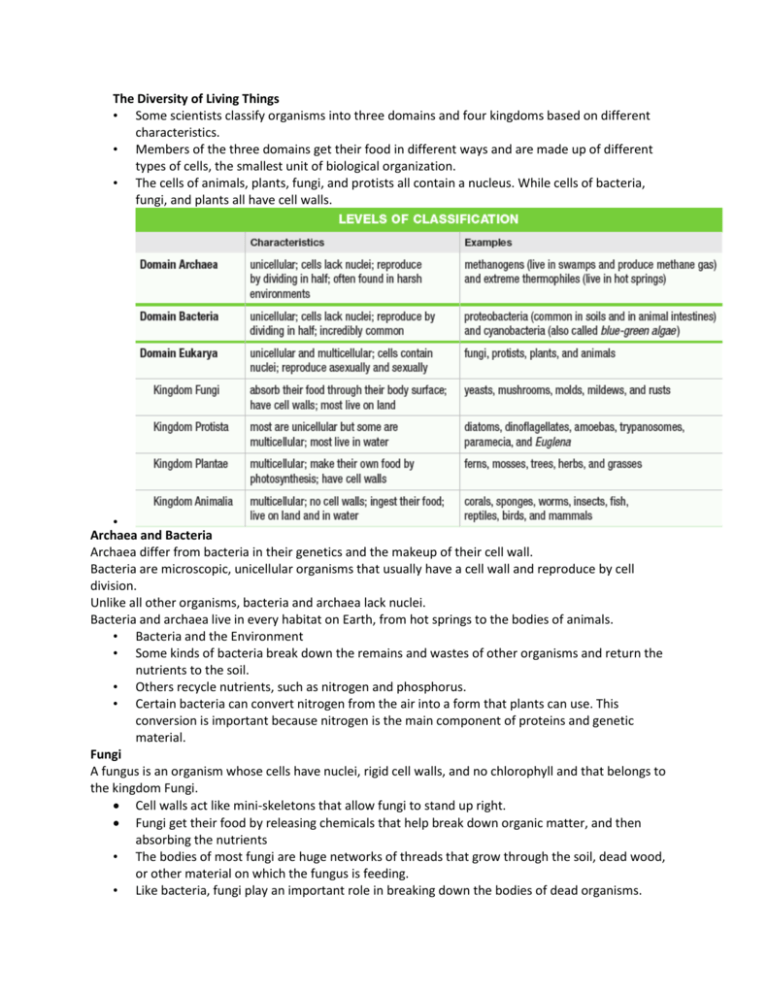
The Diversity of Living Things • Some scientists classify organisms into three domains and four kingdoms based on different characteristics. • Members of the three domains get their food in different ways and are made up of different types of cells, the smallest unit of biological organization. • The cells of animals, plants, fungi, and protists all contain a nucleus. While cells of bacteria, fungi, and plants all have cell walls. • Archaea and Bacteria Archaea differ from bacteria in their genetics and the makeup of their cell wall. Bacteria are microscopic, unicellular organisms that usually have a cell wall and reproduce by cell division. Unlike all other organisms, bacteria and archaea lack nuclei. Bacteria and archaea live in every habitat on Earth, from hot springs to the bodies of animals. • Bacteria and the Environment • Some kinds of bacteria break down the remains and wastes of other organisms and return the nutrients to the soil. • Others recycle nutrients, such as nitrogen and phosphorus. • Certain bacteria can convert nitrogen from the air into a form that plants can use. This conversion is important because nitrogen is the main component of proteins and genetic material. Fungi A fungus is an organism whose cells have nuclei, rigid cell walls, and no chlorophyll and that belongs to the kingdom Fungi. Cell walls act like mini-skeletons that allow fungi to stand up right. Fungi get their food by releasing chemicals that help break down organic matter, and then absorbing the nutrients • The bodies of most fungi are huge networks of threads that grow through the soil, dead wood, or other material on which the fungus is feeding. • Like bacteria, fungi play an important role in breaking down the bodies of dead organisms. • • Some fungi, like some bacteria, cause disease. Athlete’s foot is an example of a condition caused by fungi. Other fungi add flavor to food as in blue cheese. The fungus gives the cheese both its blue color and strong flavor. Yeasts are fungi that produce the gas that makes bread rise. • Protists Protists are diverse organisms that belong to the kingdom Protista. Some, like amoebas, are animal-like. Others are plantlike, such as kelp, and some resemble fungi. Most protists are unicellular, microscopic organisms, including diatoms, which float on the ocean surface. Another protist, Plasmodium, is the unicellular organism that causes the disease malaria. From an environmental standpoint, the most important protists are algae. Algae are plantlike protists that can make their own food using light energy from the sun. They range in size from the giant kelp to the unicellular phytoplankton, which are the initial source of food in most ocean and freshwater ecosystems.




